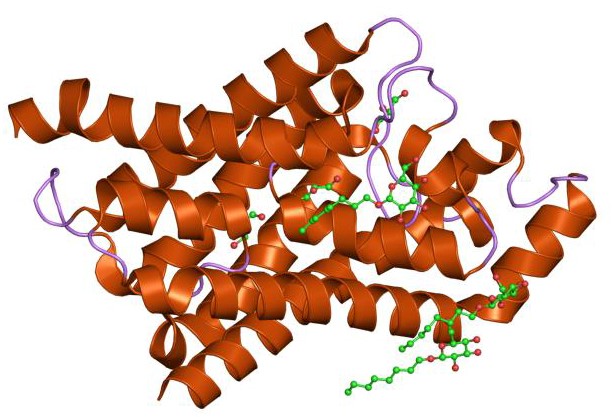Creative Biostructure offers advanced custom Mempro™ membrane protein production services for major intrinsic protein (MIP)/formate-nitrite transporter (FNT) superfamily using cell-free expression system. Our patent cell-free expression system can best preserve the native conformation of MIP/FNT superfamily proteins.
Mempro™ cell-free protein production system is an innovative platform to produce membrane proteins, which can bypass the limitations that encountered in cell-based protein production system, including host cell toxicity, low yield and solubilization and purification using detergents. In the Transport Classification Database (TCDB), FNT superfamily belongs to the MIP superfamily. Members of the FNT superfamily can form anion channels for monovalent anions, and are found in prokaryotes and certain fungi. Recently, most FNTs have been classified as: formate channels (FocA and FdhC), hydrogen sulphide channels (HSC), and nitrite channels (NirC). MIPs comprise a large superfamily of transmembrane protein channels that are composed of six transmembrane helices named TM1-TM6 and two half-helices named LB and LE. It is well known that MIPs can facilitate water and solute permeability across cell membranes. The MIP superfamily is divided into three subfamilies, including aquaporins (AQP), aquaglyceroporins and S-aquaporins.

Figure 1. The structure of a glycerol-conducting channel. (Wikipedia)
Creative Biostructure has rich professional experience in high-yield MIP/FNT superfamily production using cell-free protein expression systems, we can provide various strategies for Mempro™ cell-free membrane protein production, including:
- Mempro™ Cell-Free Protein Production in E. coli;
- Mempro™ Cell-Free Protein Production in Wheat Germ;
- Mempro™ Cell-Free Protein Production in Rabbit Reticulocyte;
- Mempro™ Cell-Free Protein Production in Baculovirus.
Among Mempro™ cell-free membrane protein production systems, E. coli S30 extract is widely used for MIP/FNT superfamily production. Wheat germ extract can provide eukaryotic translation system for MIP/FNT superfamily expression. Baculovirus expression system from Autographa californica nucleopolyhedrovirus (AcNPV) is also a major system for MIP/FNT superfamily expression, which is developed in the early stage that transfected insect cells in combination with vectors derived from the baculovirus. Crude rabbit reticulocyte lysate is also widely employed for eukaryotic cell-free transmembrane protein expression. To employ an appropriate source of the extract, many factors, such as the availability of materials, protein origin and complexity, downstream processing, etc., should be considered.
With the Mempro™ cell-free protein production platform, Creative Biostructure is capable of expressing, purifying and crystallizing MIP/FNT superfamily proteins to facilitate the study of their biological functions.
Notably, one challenge associated with Mempro™ cell-free membrane protein production is that degradation of the DNA by endogenous nucleases. Creative Biostructure can optimize Mempro™ cell-free membrane protein production for MIP/FNT superfamily proteins using plasmids owing to they are circular and have no end for the exonucleases to attach.
We can provide other various Mempro™ membrane protein production services. Please feel free to contact us for a detailed quote.
References:
F. Bernhard, et al. (2013). Cell-free expression - making a mark. Cur. Opin. Struct. Biol., 23: 374-380.
M. Mukherjee, et al. (2016). Functional diversity within the fnt superfamily of anion channels: phylogenetics & molecular dynamics studies. Biophysical J., 110(3): p117a.
N. Yan (2015). Structural biology of the major facilitator superfamily transporters. Annu. Rev. Biophys., 44: 257-283.
R. K. Verma, et al. (2015). Major intrinsic protein superfamily: channels with unique structural features and diverse selectivity filters. Methods Enzymol., 557: 485-520.
